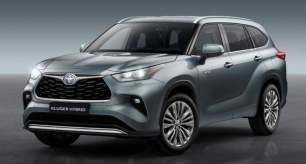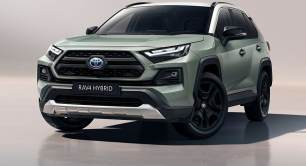The Kluger is both practical and comfortable for passengers as each row gets a great amount of head- and legroom – yes, even third-rowers, but the low level of amenities in that row will render it a 'sometimes seat' for adults or older kids.
The 208mm ground clearance, wide door apertures and low-sitting seats makes it a very easy SUV to get in and out of, even for kids. The access to the third row is also good as the 60/40 split middle bench seat can be slid forward.
The electric front seats offer lots of adjustments, including lumbar support on the drivers side, but both seats get heating. They’re also well-padded and quite comfortable on a longer journey.
The outboard seats on the middle row offer the most comfort as they have longer under-thigh support, but the entire row benefits from heavy padding and the seat backs can recline.
The third row offers a curious 60/40 split and is wide enough for two adults to not be squished like sardines.
Although the Kluger is a seven-seater, families will be bummed that there are no child seat anchor points in the third row. But the middle row has two ISOFIX child seat mounts and three top-tether anchor points. It is more than wide enough to accommodate three seats side by side and you’ll have enough room for the front passenger when a rearward facing child seat is installed, too.
Individual storage is above average for the class, but the front row gets the best of it. There are two handy shelves built-into the dash, a glove box, a deep middle console (that swallows my arm) and cubbies in the centre console that include a phone cradle and two cupholders. There's also a sunglasses holder and little cubby beside the driver's knee.
In the middle row, you get two map pockets, two cupholders in a fold down armrest, and a drink holder in each door. While the third row gets a couple of cupholders.
Amenities are well-rounded for the most part, with the three-zone climate control and well-positioned directional air vents in the roof for the back two rows. Middle-rowers also get reading lights and two USB-C ports.
Technology is easy to use and looks great as the 12.3-inch display uses the same multimedia system as Lexus. The built-in satellite navigation is simple to set up and shows clear directions with lots of route customisations available.
There is wired Android Auto and wireless Apple CarPlay, but you do have to initially connect the CarPlay via a cable.
Rounding out the cabin is the great-size boot that offers 241L with all seats in use, but that can jump up to 552L when the third row is stored.
The level loading space makes it easy to slide larger items in and out of, and there’s a handy underfloor storage compartments for smaller items. You get a full-size spare tyre underneath the car and a powered tailgate in this model.








.png)




































.png)



























